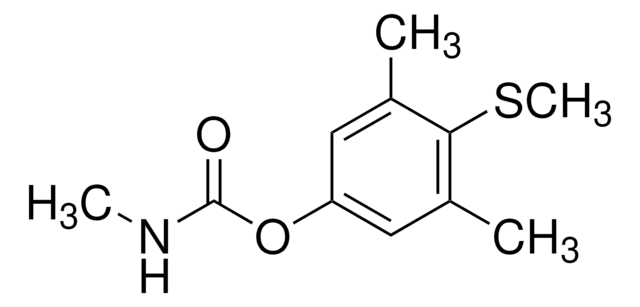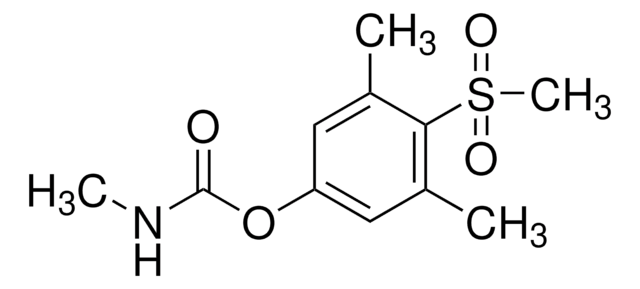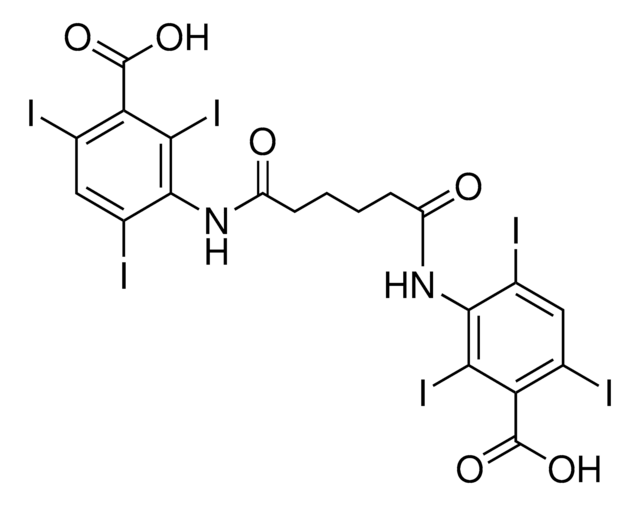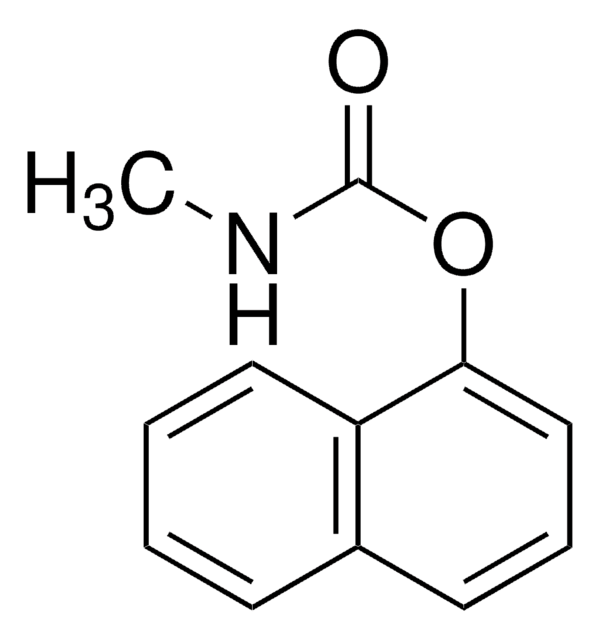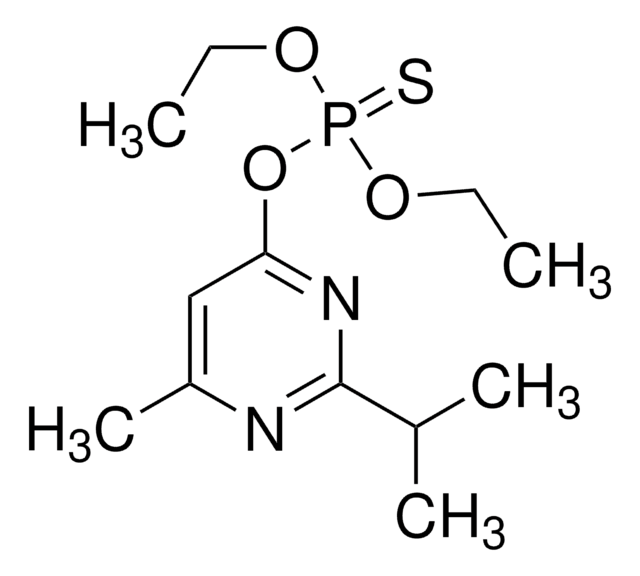Wichtige Dokumente
31097
1-Naphthol
PESTANAL®, analytical standard
Synonym(e):
α-Naphthol, 1-Hydroxynaphthalin
About This Item
Empfohlene Produkte
Qualität
analytical standard
Qualitätsniveau
Dampfdichte
4.5 (120 °C, vs air)
Dampfdruck
1 mmHg ( 94 °C)
Produktlinie
PESTANAL®
Assay
≥98.0% (GC)
Selbstzündungstemp.
1007 °F
Haltbarkeit
limited shelf life, expiry date on the label
Expl.-Gr.
5 %
Methode(n)
HPLC: suitable
gas chromatography (GC): suitable
bp
278-280 °C (lit.)
mp (Schmelzpunkt)
94-96 °C (lit.)
Anwendung(en)
forensics and toxicology
pharmaceutical (small molecule)
Format
neat
SMILES String
Oc1cccc2ccccc12
InChI
1S/C10H8O/c11-10-7-3-5-8-4-1-2-6-9(8)10/h1-7,11H
InChIKey
KJCVRFUGPWSIIH-UHFFFAOYSA-N
Suchen Sie nach ähnlichen Produkten? Aufrufen Leitfaden zum Produktvergleich
Allgemeine Beschreibung
Anwendung
- In human urine by a rapid and automated method based on coupled-column liquid chromatography (LC-LC) with fluorescence detection.
- In canned fruit juices by reversed-phase high performance liquid chromatography with diode-array detection.
Rechtliche Hinweise
Signalwort
Danger
Gefahreneinstufungen
Acute Tox. 3 Dermal - Acute Tox. 4 Oral - Aquatic Acute 1 - Aquatic Chronic 3 - Eye Dam. 1 - Skin Irrit. 2 - Skin Sens. 1A - STOT SE 2 Oral - STOT SE 3
Zielorgane
Kidney, Respiratory system
Lagerklassenschlüssel
6.1C - Combustible acute toxic Cat.3 / toxic compounds or compounds which causing chronic effects
WGK
WGK 1
Flammpunkt (°F)
257.0 °F - closed cup
Flammpunkt (°C)
125 °C - closed cup
Persönliche Schutzausrüstung
dust mask type N95 (US), Eyeshields, Faceshields, Gloves
Hier finden Sie alle aktuellen Versionen:
Analysenzertifikate (COA)
Die passende Version wird nicht angezeigt?
Wenn Sie eine bestimmte Version benötigen, können Sie anhand der Lot- oder Chargennummer nach einem spezifischen Zertifikat suchen.
Besitzen Sie dieses Produkt bereits?
In der Dokumentenbibliothek finden Sie die Dokumentation zu den Produkten, die Sie kürzlich erworben haben.
Kunden haben sich ebenfalls angesehen
Unser Team von Wissenschaftlern verfügt über Erfahrung in allen Forschungsbereichen einschließlich Life Science, Materialwissenschaften, chemischer Synthese, Chromatographie, Analytik und vielen mehr..
Setzen Sie sich mit dem technischen Dienst in Verbindung.
